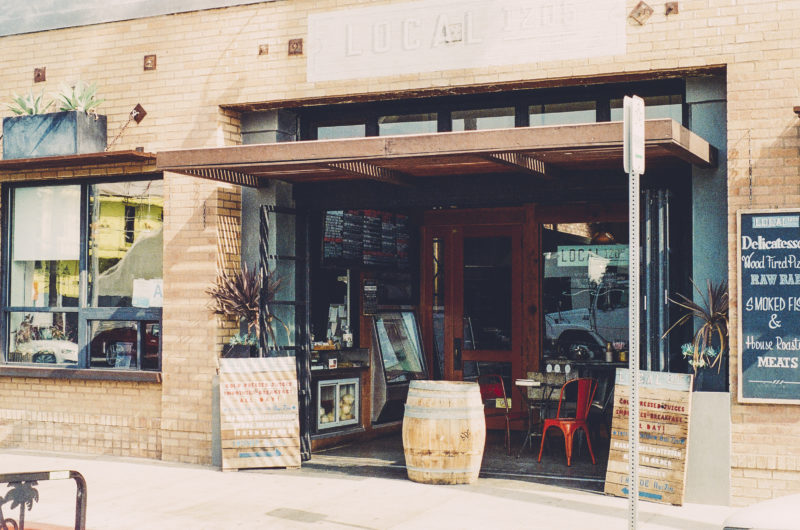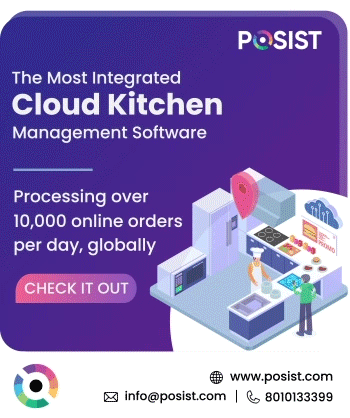The location of the restaurant is crucial to its success. Much thought and planning need to go into deciding the location, and many factors need to be considered before selecting the site. Therefore, we have compiled a complete restaurant site selection checklist that you must refer to before finalizing the place for your restaurant. If for some reason, you are still not able to finalize your ideal location, this article will tell you what to do in case of a bad restaurant location.
1. Things to Consider For A Restaurant Site Selection
Keep the following points in mind while deciding the location of your restaurant.
1.1. Market Research
Before you do anything else for your restaurant site selection, you must do market research and industry analysis on the location where you wish to open your restaurant. The area where you are going to open a restaurant must be scrutinized on all levels: right from the current competition to your potential customers.
You must also do a demographic survey to understand and identify the potential customer base, and their eating preferences. For example, an expensive excellent dining restaurant in an area majorly populated by students and youngsters is not going to do well.
It is also a good idea to identify your existing competition in the vicinity; if a competitor is doing well in that area, it means there is an established customer base in that area. You would now only have to figure out to funnel the customers from your competitors to your restaurant.
1.2. Front Location
A front location can do wonders for your restaurant. A restaurant right at the front of the building has maximum visibility and generates the highest footfalls compared to the other areas. Customers usually choose the restaurant that is right in front of them. If your restaurant is not readily visible or requires customers to take a detour, chances are the customer would not go to your restaurant at all.
1.3. Upper Floor or Rooftop Location
Upper floor locations should ideally be avoided during your restaurant site selection process. Rooftop locations have less visibility, and it is also difficult for customers to reach the top-floor restaurant. If you must set up your restaurant on an upper floor, at least ensure that the building has an elevator.
Rooftop restaurants are favorites among customers, but there are some hassles involved in them. To get a trade license, the rooftop restaurant cannot have a kitchen on the top floor. Therefore, you need to have another level to set up the kitchen. This can turn out to be a little troublesome as you need enough staff members to send food on the rooftop.
1.4. Size
The size of the location is an essential factor to be considered during the restaurant site selection process. The size of the restaurant does not just imply the dining space. The site should be big enough to accommodate all the kitchen equipment. Walk-in freezer, cooking stations, etc. all require large spaces. Depending on your concept you can decide the size of the seating area, bar, etc. A cramped-up space to accommodate more customers often works the opposite and drives customers away because of the small and narrow dining space.
1.5. Access and Parking
Easy accessibility to the restaurant and the parking space around it is an essential aspect of restaurant site selection that must not be ignored. If the customers are not able to reach the restaurant quickly, they are more likely to choose a different restaurant to dine all together. Parking is also an essential part of the location. If your restaurant does not have a designated space for parking, then customers would merely go to another restaurant where they can park easily.
1.6. Building Amenities
You need to check whether the building that you have chosen for your restaurant has the desired amenities or not. Complete power backups must always be present in the restaurant building. Having a bathroom is also a must in the restaurant, and must not be ignored during the restaurant site selection.
1.7. Budget
All the factors mentioned above decide the price of the property. Prime locations with better facilities cost more. A good spot is essential; however, it does not make sense to spend a fortune on the restaurant site. The cost of the site must never exceed more than 10% of your revenues. Choosing a restaurant site that fulfills all your requirements, and yet is cheap can be a daunting task, and is, therefore, one of the biggest challenges of setting up a restaurant.
1.8. Determine Criteria That Drive Your Business
Consider your USP when choosing the location for your restaurant. For instance, if you own a restaurant that best serves healthy salads and smoothies, it will flourish more in the locality with a nearby gym or fitness center. Similarly, a coffee cafe will be more profitable near a university campus.
A fine-dine restaurant works well in areas near the residential complexes. Whereas casual dining restaurants will boom in areas with more teenagers or tourists around.
1.9. Understand Habits, Patterns, Trends
It is important to get familiar with the latest trends in the restaurant industry. It will determine the customer’s habits and patterns when ordering food. For instance, people nowadays prefer eating at home, so most restaurants have started food delivery services.
Also, many restaurants operate as ghost kitchens. For this, the location is paramount. If your restaurant is located centrally, you will get more customers. It will also increase your revenue as centrally located restaurants deliver to more people in less time, enhancing customer satisfaction.
1.10. Market Research
Before you do anything else for your restaurant site selection, you must do market research and industry analysis on the location where you wish to open your restaurant. The area where you are going to open a restaurant must be scrutinized on all levels: right from the current competition to your potential customers.
You must also do a demographic survey to understand and identify the potential customer base, and their eating preferences. For example, an expensive excellent dining restaurant in an area majorly populated by students and youngsters is not going to do well.
It is also a good idea to identify your existing competition in the vicinity; if a competitor is doing well in that area, it means there is an established customer base in that area. You would now only have to figure out how to funnel the customers from your competitors to your restaurant.
Your market research should also involve an analysis of the latest food trends in the locality or market. Identifying and understanding pain points of customers related to restaurant food and service in the area. It will help you analyze how you can improvise and stand out from the others. Also, excellent market research can help you maintain a competitive edge, get a loyal customer base, and implement marketing strategies keeping in mind the customer’s needs.
1.11. Evaluate Your Competitors
Before finalizing the restaurant’s location, look out for the services and food offered by your competitors in the locality. Also, you need to learn about the restaurants nearby offering similar services and food. Extensive market research will help you analyze the weaknesses and strengths of your competitors. It also helps you understand their loopholes so you canavoid them in your restaurant. Once you research everything, figure out unique strategies to stand out and attract more customers.
2. How to Select a Restaurant Location For A QSR Restaurant?
Quick service restaurants require less investment. Also, customers prefer a location that is convenient for them, as QSRs are meant for quick meal options. So, you don’t have to look for premium locations. Instead, you can opt for a busy area where many people work – it will boost your business. Also, as people expect fast delivery and turnover at QSRs, you don’t need large parking spaces.
One factor that makes QSRs different from other types of restaurants is that they boom when they are opened near their competitors. For instance, if you open it near a busy street with many QSR outlets, it can yield more profit. Suppose you serve tacos and you set it near a pizza QSR, then you can get their audience too, as people want to try new options. So, it is vital that you choose your competition wisely when looking for a location.
Also, the following other factors should also be considered when deciding upon the location for a QSR:
- Easy accessibility for customers
- Easily visible
- Suits the USP of your QSR
- Appropriate size to accommodate all equipment and essentials
- Affordable
- Safe environment
- Check the business regulations of the locality
- No or minimal parking space is required
- The ground floor would be best
3. How to Select a Restaurant Location For a Casual Dine?
Casual dining restaurants lie between fancy fine dining and quick-service restaurants. They have a friendly ambiance and serve moderately priced food. So, you need a location which suits it well, such as nearby universities or tourist places. Unlike QSRs, they do not focus on fast turnover but focus more on the quality of food to be served and offer other value-adding services at an affordable price.
One factor that is important when deciding on a casual dining restaurant location is its accessibility. It should be easily accessible to customers. So, you should either open it on the ground floor or the first floor. Also, if it’s in any inside location, then put directional boards within the market to make it accessible for consumers.
The following other factors should also be considered when deciding upon a location for casual dining:
- Easily visible
- Suits the USP of your restaurant
- Appropriate size to accommodate all equipment and essentials
- Affordable to buy or rent
- Safe environment and surrounding
- Check the business regulations of the locality
- Requires parking space
4. How to Select a Restaurant Location For a Fine Dine?
Fine dining provides the right blend of high-class infrastructure, elegant ambiance and excellent services. Fine diners expect an exquisite food range, a formal environment, and well-trained servers. Also, fine dining restaurants offer food at high prices. Therefore, you must look for a location where people who can afford it can come and enjoy the fine dining experience. Such as in the shopping complexes, malls, and roof-tops of uptown market places. Also, it is best suited for residential complexes with children and families.
Fine diners look for an exclusive dining experience and excellent services. So, one factor that you should look upon when deciding the location is the surrounding. Choose a posh street with clean, hygienic and classy surroundings. The building you are selecting should be well-maintained and must have an ample supply of basic necessities such as water and electricity. Also, you should plan the restaurant entrance at the exterior of the building so that customers do not have to walk long to get inside. Overall, the restaurant’s location should enhance the customer experience.
The following other factors should also be considered when selecting the fine dining restaurant site:
- Choose a building with escalators
- Roof-tops and upper floor are suitable
- Easy accessibility for customers
- Easily visible
- Appropriate size for essentials and services
- Check the business regulations of the locality
- Requires more parking space for valet parking
5. Conclusion
Starting a restaurant is a daunting task and finding the right sport is even more challenging. Not every location is right for your restaurant. It could take you to the heights or into the dud. So, the right location is crucial for the business to thrive. It depends upon the type of restaurant you are planning to start. You should keep the following essential factors in mind when looking for the right spot.
Restaurant site selection is one of the first steps of setting up a restaurant. The success of a restaurant is heavily dependent on the location and must be chosen carefully. Was this article helpful? Let us know in the comments below!




















This article is awesome!!!! kudos to the team.
really gr8 article!!
Really useful tips on choosing restaurant location. For rooftop, getting the license is important as there are so many government regulations that prohibit rooftop restaurants.
When determining accessibility, it is necessary to consider traffic system, number of lanes, speed limits, and the existence of median strips. You should also evaluate automobile or pedestrian traffic counts, traffic flow, traffic peaks and valleys by hours, and other pertinent data. Great article, well done Restaurant Times.
Selecting a location for the restaurant is the first thing anyone should be paying attention to. Your restaurant location will decide the fate of your restaurant in the long run.
I am looking some insights on setting up a restaurant on a national highway! Please advise the most important elements when considering to open a restaurant for Highway!
Very Informative article. Thanks.!!